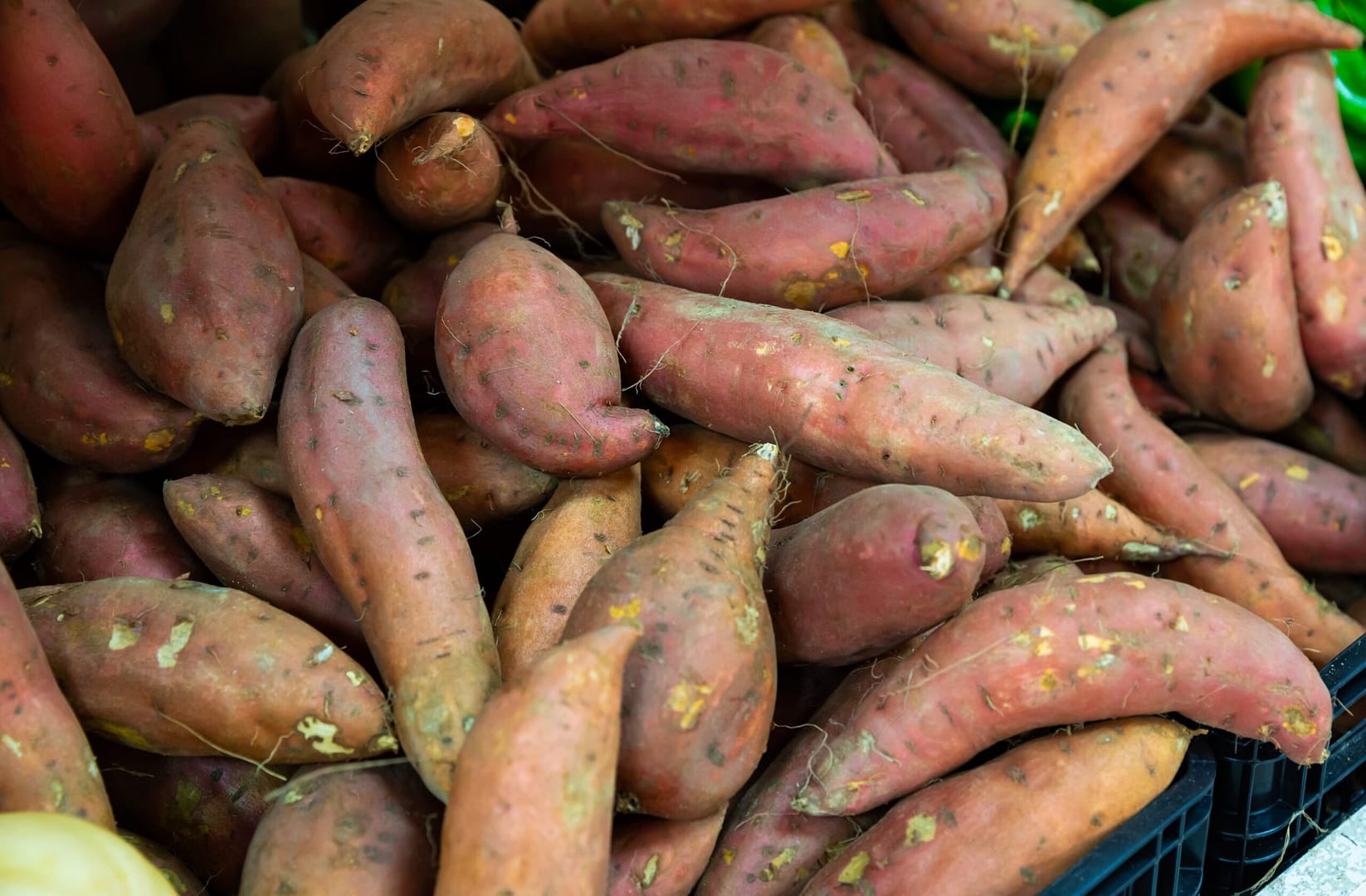About us
Learn about the history, processes and responsibilities of the North Carolina Sweetpotato Commission.
The North Carolina Sweetpotato Commission
The North Carolina Sweetpotato Commission is a non-profit corporation made up of over 300 sweetpotato growers along with the packers, processors and business associates that support them.
The sole purpose of the Commission is to increase sweetpotato consumption through education, promotional activities, research and honorable horticultural practices among its producers.
Thanks to the six sweetpotato farmers that chartered the Commission in 1961, the Commission has supported its growers and maintained North Carolina as the No. 1 sweetpotato-producing state in the United States since 1971.
The North Carolina Sweetpotato Commission is managed by the Board of Directors, which is elected by the members of the commission each January at the Annual Meeting. These twelve directors, who serve a rotating three-year term, are growers, packer-shippers or processors who are actively involved within the sweetpotato industry.
Responsibilities of the Board

Conducting the business of the North Carolina Sweetpotato Commission

Employing the Executive Director

Carrying out the referenda

Enforcing the observance by its members of all provisions of the Charter and By-Law
Our History

Sweetpotatoes became one of the most grown vegetable crops in North Carolina and cemented themselves as a staple in southern cuisine.
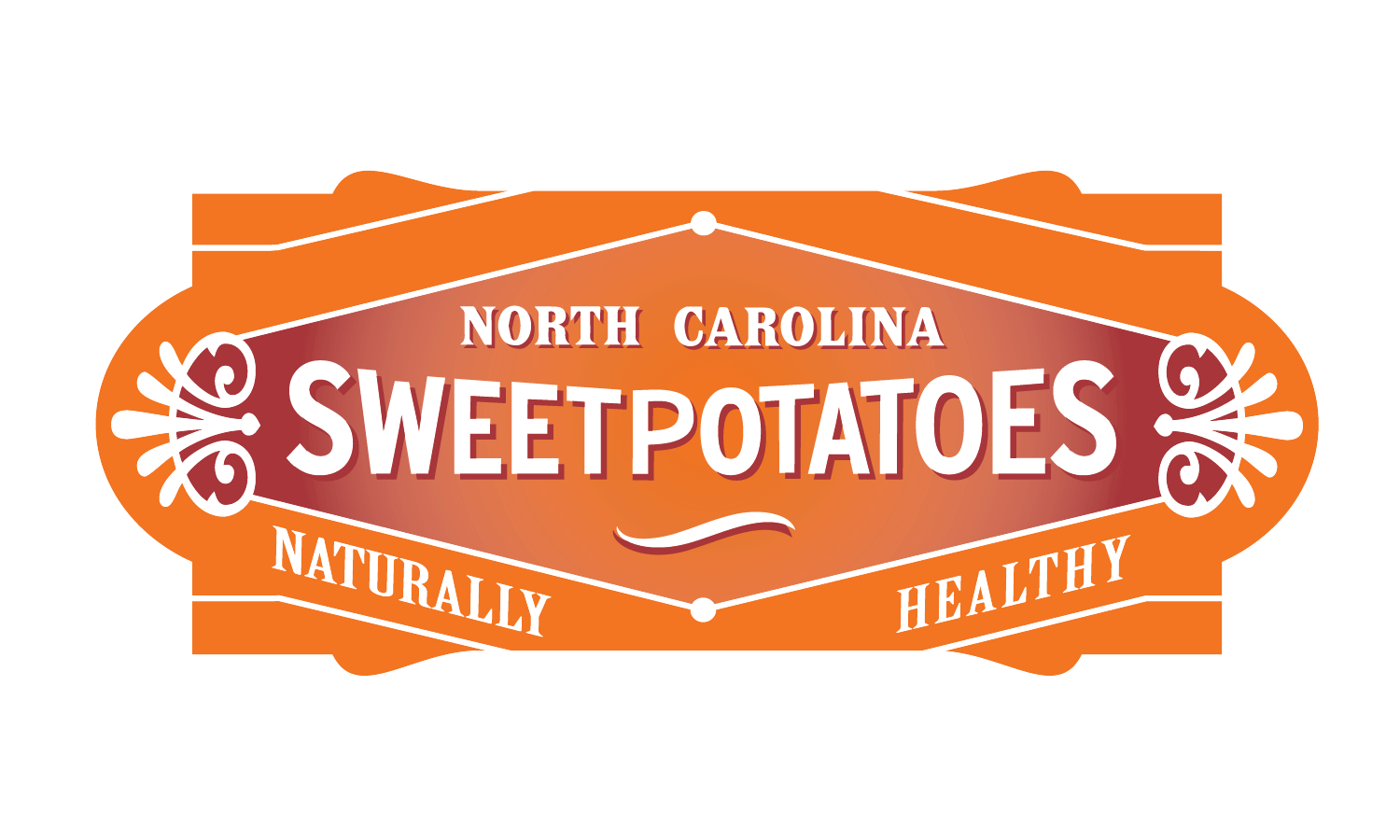
The North Carolina Sweetpotato Commission was founded and chartered by six visionary sweetpotato producers. This marked the start of the journey to transform North Carolina into the top sweetpotato-producing state in the U.S.
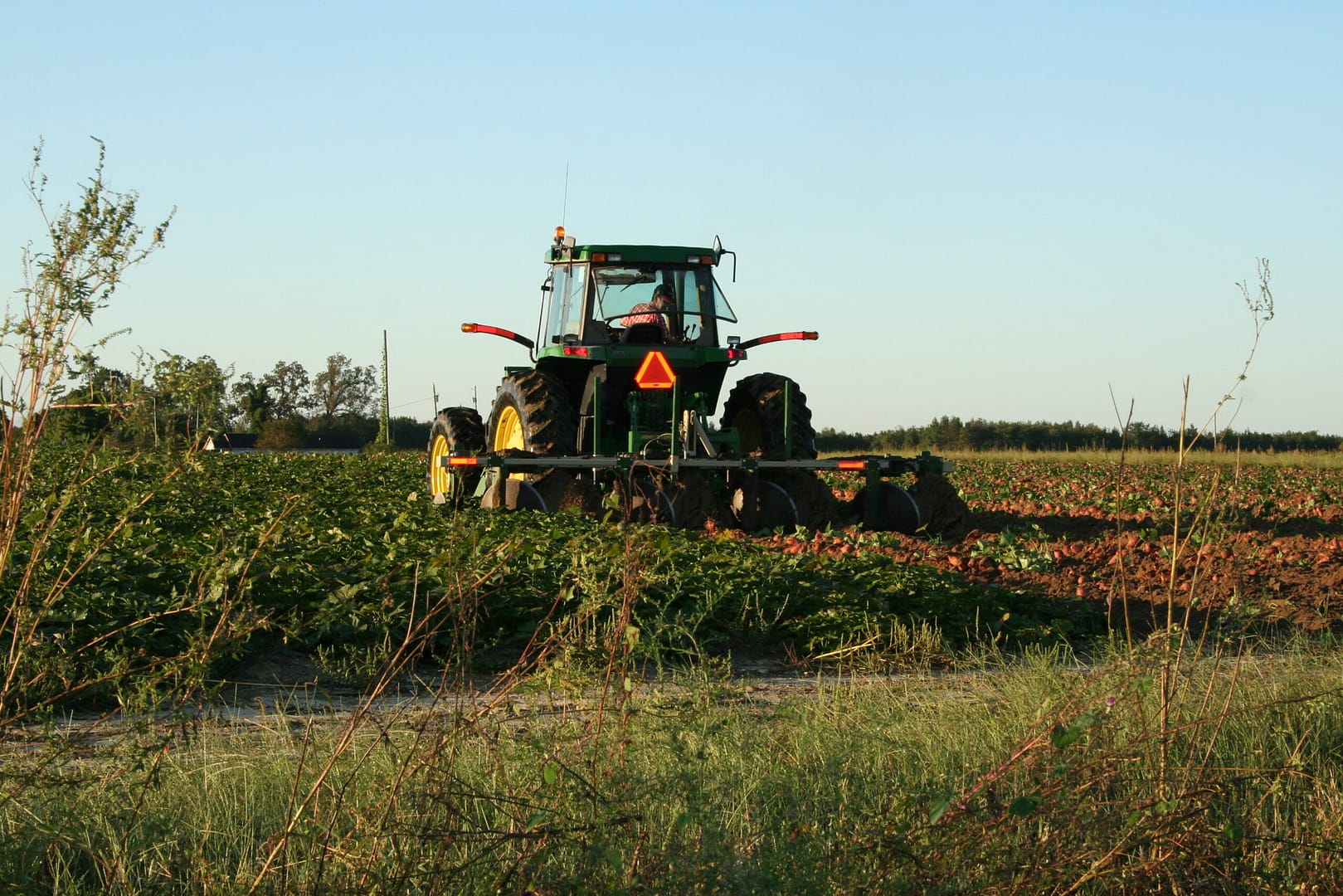
Just ten years after its formation, North Carolina achieved the coveted rank of No. 1 sweetpotato-producing state in the U.S. This achievement has been maintained every year since, contributing to North Carolina's reputation in the sweetpotato industry.
Farming process
Starting the journey
Unlike Irish or white potatoes, the sweetpotato story doesn’t start with seeds. Instead, they are grown from cuttings called sprouts or slips. Some farmers start the sprouts in a greenhouse, while others grow sprouts by “bedding” sweetpotatoes in March.
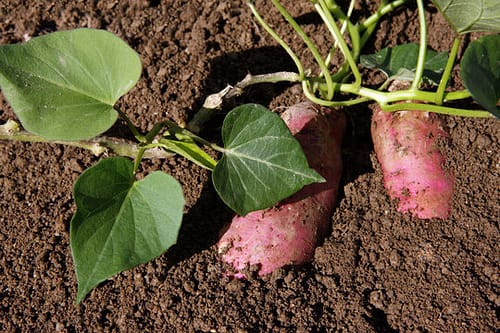
Transplanting for success
Come April, May and June, the sprouts are cut and then planted into one of the 34,000 hectares of North Carolina sweetpotato fields. Farmers carefully relocate the sprouts to ensure optimal growth conditions – this is known as transplanting.

Growing up
Sweetpotatoes need around 90-120 frost-free days to grow and mature. They grow underground in the fertile and nutrient-dense North Carolina soil.
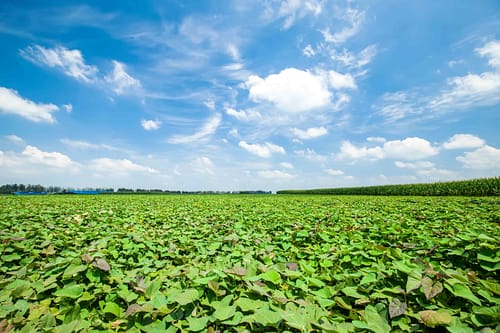
Harvesting time
As the calendar turns to August, the sweetpotato harvest begins. Tractors gently flip the sweetpotatoes onto the surface before they’re harvested by hand to protect their delicate skin. The harvested sweetpotatoes are then graded and sorted based on their size.
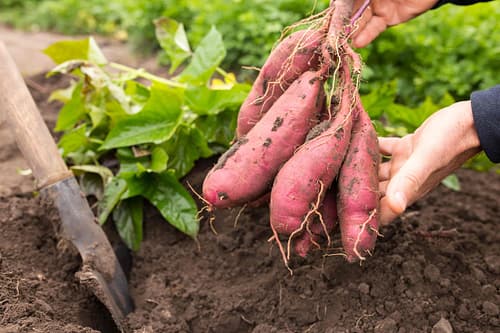
The storing process
To ensure a year-round supply of sweetpotatoes, North Carolina State University developed an innovative ventilation system so farmers can store sweetpotatoes for up to 12 months.

Curing for quality
When the sweetpotatoes are ready to be exported, they’re transferred to a special room where they are cured for three to five days at 30 centigrade and high humidity.
This essentially wakes the sweetpotato back up, tightening the skin and enabling the starch to turn to sugar. If left untreated, they would turn green and the taste would be affected.

Exporting across Europe
The cured sweetpotatoes are then cleaned and exported by shipping container. It takes 14 days for the sweetpotatoes to arrive in Rotterdam before continuing their journey to restaurants, supermarkets, and plates across Europe.
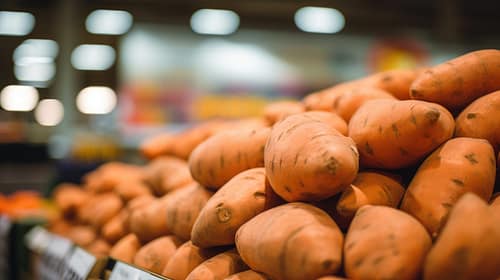

What are sweetpotatoes?
The sweetpotato is a member of the morning glory family and is botanically classified in the genus Ipomoea batata. Unlike other vegetables, sweetpotatoes are grown from ‘slips’ or shoots of mature sweetpotatoes and don’t start from seeds.
Sweetpotatoes are vibrant, versatile, and delicious root vegetables that are highly nutritious and packed with health benefits. Sweetpotato are a rich source of Vitamin A, and feature a variety of other nutritional benefits that can help your body fight off illness and infection.
Sweetpotatoes are harvested in the autumn or ‘fall’ in North Carolina but can be purchased throughout the year thanks to an innovative curing process that puts the sweetpotatoes into a state of hibernation to extend their shelf life for a full year, meaning they can be exported across the world.
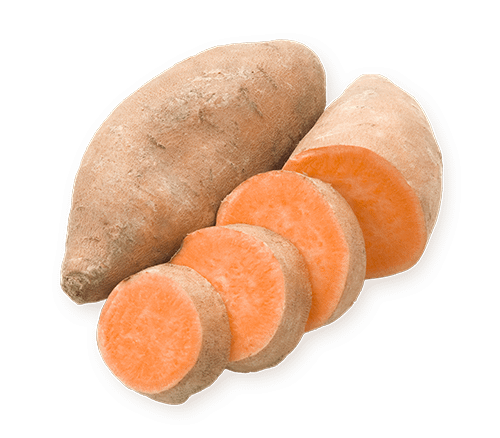

Sweetpotato varieties
There are hundreds of varieties of sweetpotato grown in North Carolina. While some are grown in small quantities for special uses, the majority are the moist, sweet, and orange fleshed varieties that we are used to seeing and eating across Europe.
The most popular varieties found in supermarkets, grocers and restaurants are the white sweetpotato, purple sweetpotato and the Covington sweetpotato.
The Covington was developed at the North Carolina State University, to be grown by farmers in North Carolina, and is today the most common sweetpotato variety on the market.
The one-word spelling of sweetpotato was officially adopted by the National Sweetpotato Collaborators in 1989, to distinguish sweetpotatoes from white potatoes
Are sweetpotatoes potatoes?
It’s a common myth that sweetpotatoes are orange potatoes. Even though they are both grown underground and originated from Central and South America, they are only distantly related. Sweetpotatoes are from the morning glory family (Convolvulaceae), whereas white potatoes are nightshades (Solanaceae).
In terms of appearance, sweetpotatoes typically have a tan skin and orange flesh, but also come in purple, white, and red varieties. Regular potatoes are usually brown or yellow with white or yellow flesh. Sweetpotatoes are slightly lower in calories than white potatoes and are also rich in vitamin A and are a source of vitamin C.
Did you know that sweetpotatoes count towards your 5-a-day, but white potatoes do not? This is because white potatoes are used as the starchy element of dishes similarly to breads, pasta, rice and noodles. Sweetpotatoes are often eaten as an additional source of essential micronutrients and are the perfect choice for a balanced diet.


Are sweetpotatoes the same as yams?
Another myth is that sweetpotatoes are the same as yams – but this is not the case.
The majority of yams are imported from West Africa where nearly 95% of yam crops are grown, whereas North Carolina is responsible for 60% of sweetpotatoes exported from the United States.

Frequently Asked Questions
What are sweetpotatoes?
The sweetpotato is a member of the morning glory family and is botanically classified in the genus Ipomoea batata. Unlike other vegetables, sweetpotatoes are grown from ‘slips’ or shoots of mature sweetpotatoes and don’t start from seeds.
Why is it spelt as one word?
The one-word spelling of sweetpotato was officially adopted by the National Sweetpotato Collaborators in 1989, to distinguish sweetpotatoes (ipomoea batata) from white potatoes (solanum tuberosum).
Are sweetpotatoes potatoes?
It’s a common myth that sweetpotatoes are orange potatoes. Even though they are both root vegetables and originated from Central and South America, they are only distantly related. Sweetpotatoes are from the morning glory family (Convolvulaceae), whereas white potatoes are nightshades (Solanaceae).
Are sweetpotatoes the same as yams?
Another myth is that sweetpotatoes are the same as yams – this is not the case. The majority of yams are imported from West Africa where nearly 95% of yam crops are grown, whereas North Carolina is responsible for 60% of sweetpotatoes exported from the United States.




